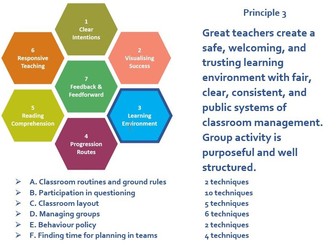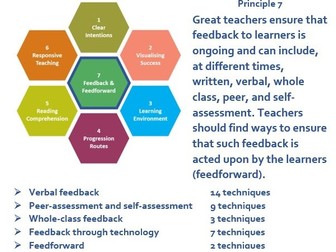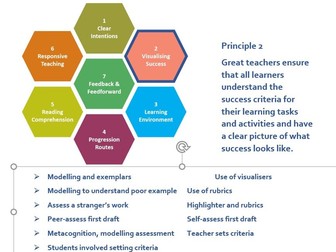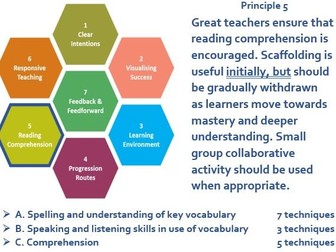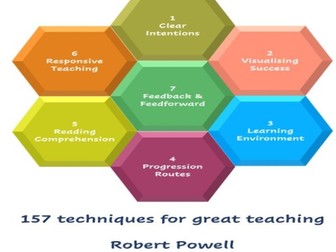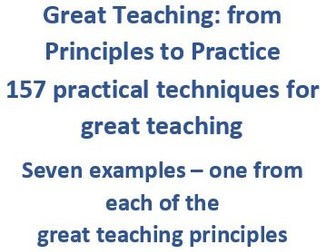Principle 3 Learning environment
<p>Great teachers have clear ground rules, manage group work, have safe, welcoming classroom management, expect good behaviour, use effective classroom layout.<br />
In this chapter there are 29 practical techniques for effective classroom management|:<br />
A. Classroom routines and ground rules 2 techniques<br />
B. Participation in questioning 10 techniques<br />
C. Classroom layout 5 techniques <br />
D. Managing groups 6 techniques<br />
E Behaviour policy 2 techniques <br />
F. Finding time for planning in teams 4 techniques</p>
